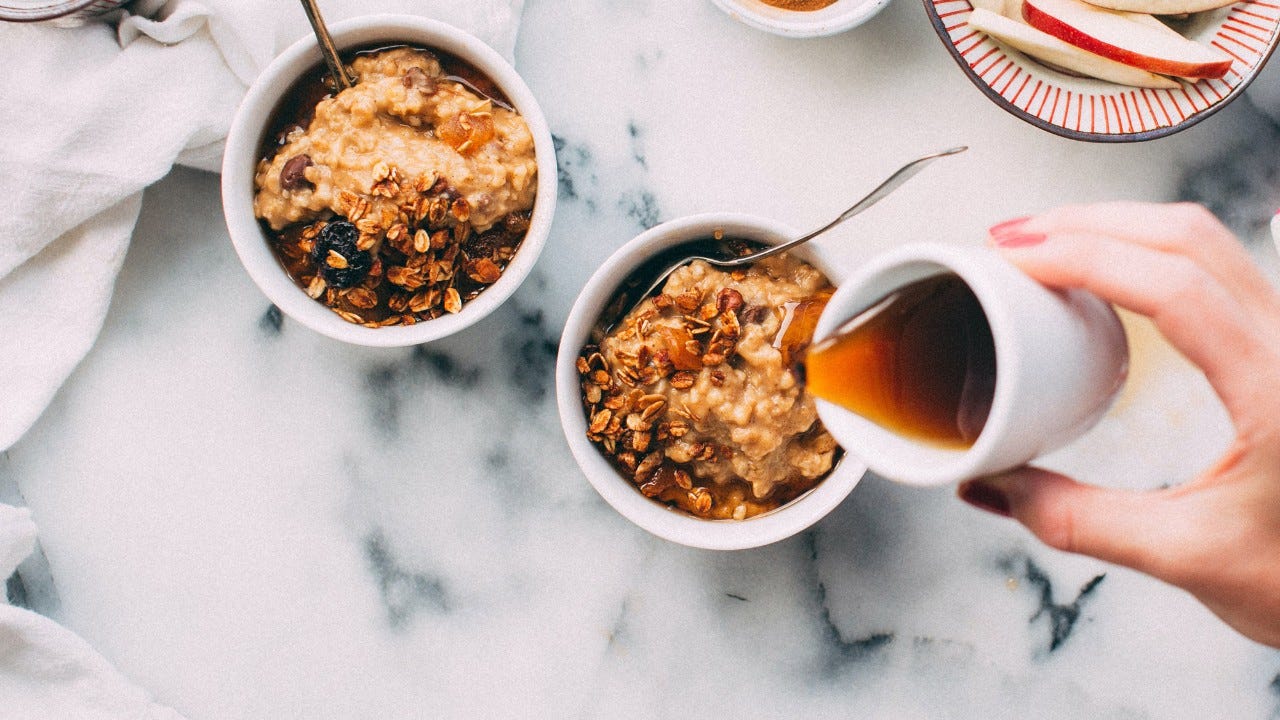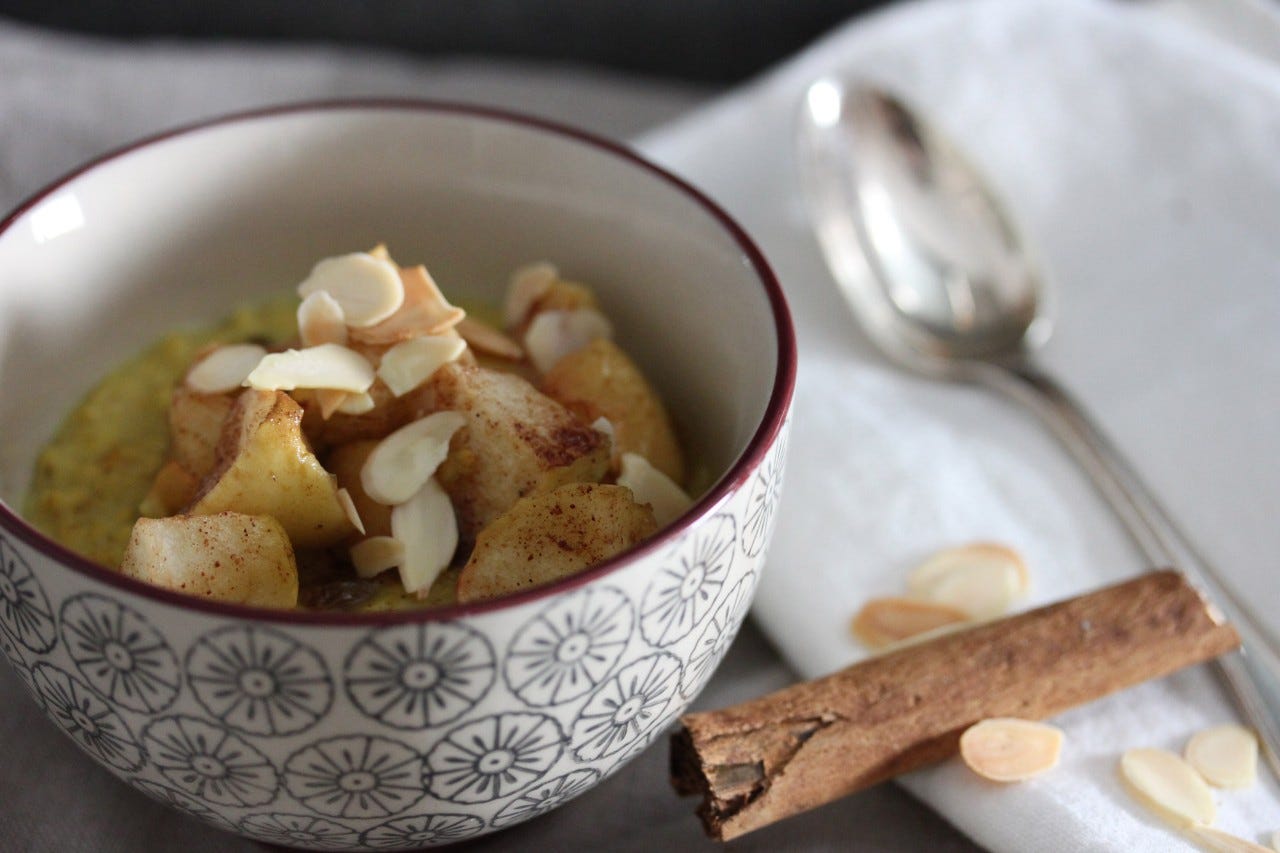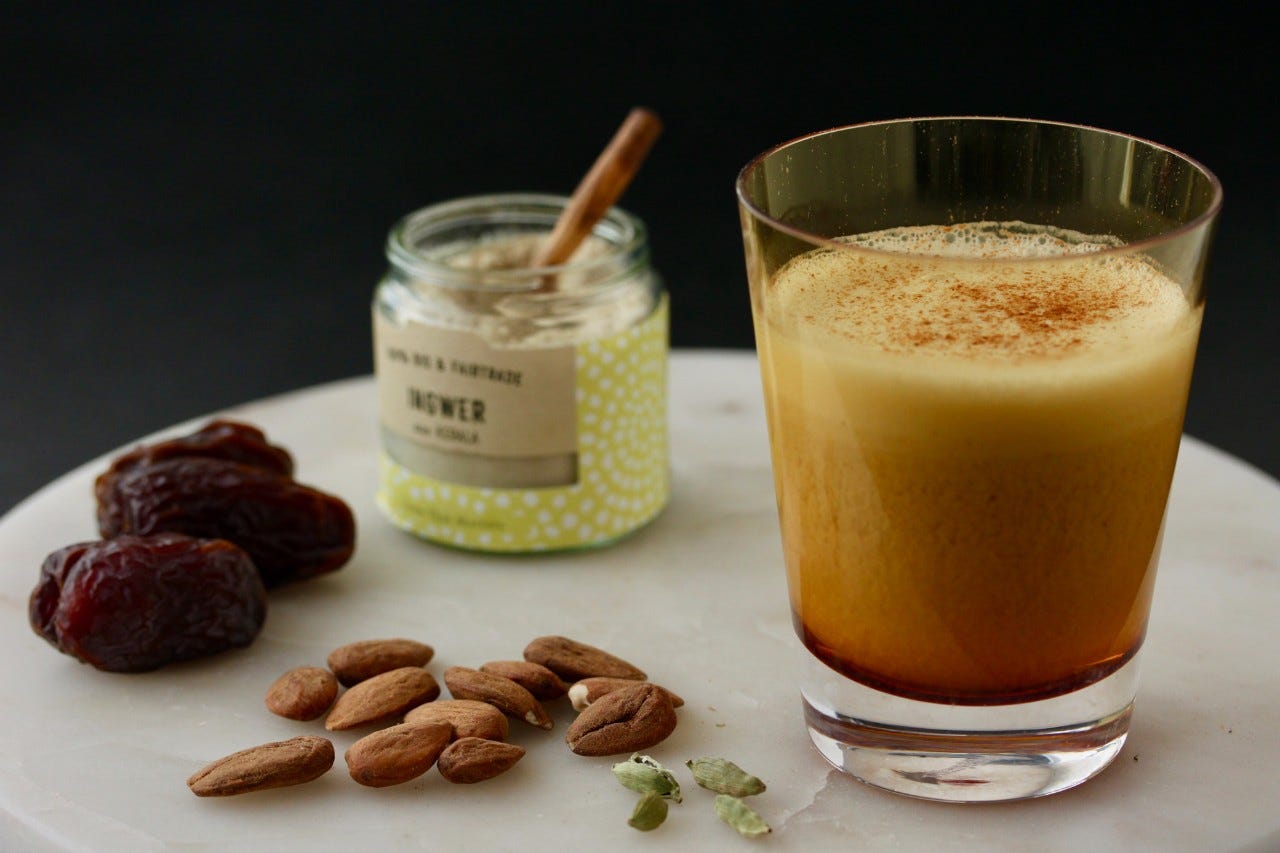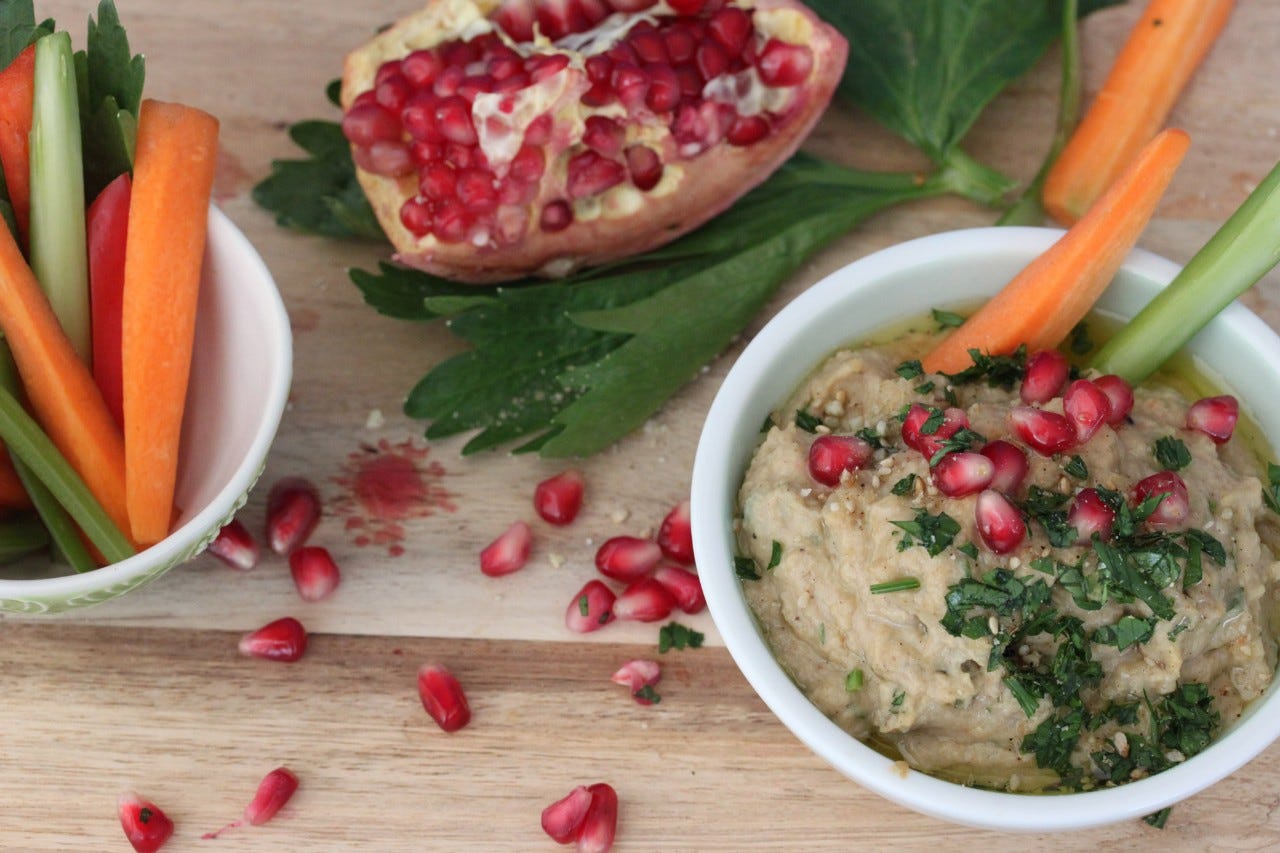Starting your day on the right foot: morning routine with Ayurveda
Stress often starts in the morning. An Ayurveda morning routine helps you start the day feeling relaxed, healthy and energised.

We’re often in a rush in the mornings: The alarm clock rings: Your alarm clock rings, you leap out of bed, splash cold water on your face, turn the coffee machine on, brush your teeth – and off you go! But starting off the day in such a rush may mean you’re unable to calm down properly for the rest of the day. According to the Job-Stress-Index 2020, three out of every ten workers say they suffer from stress, with more than half of them feeling emotionally exhausted because of it.
So how can we find our way back to more rest and recovery in our daily lives? A first step can be to start the day off on the right foot: An invigorating morning and its positive power. This has long been a tradition of Ayurveda.
What is an Ayurvedic morning ritual?
Ayurveda is often translated as the ‘science of life’. It’s a healing system dating back more than 5,000 years with its roots in India. In many ways it’s similar to European naturopathy and traditional Chinese medicine. Your first actions in the morning are of particular importance. They not only ensure a burst of rejuvenation but also help you feel cleansed and healthy.
With the following tips, you can easily integrate the Ayurveda morning routine into your home. Pick things that come easily to you, do you good and, especially important, are realistic and achievable. Start out small to achieve your goal.
-
Oil pulling in Ayurveda
Ayurveda recommends ‘cleansing’ your mouth with oil upon getting up, even before you have a sip of water. Oil pulling is a straightforward method of detoxifying which also helps to give the oral cavity a thorough clean. Western medicine now recognises the positive aspects of oil pulling. For example, it can reduce plaque and discolouration, prevent inflammation and strengthen the teeth.
Here’s how: place one teaspoon of sesame, linseed or coconut oil in your mouth and swish it around, actively sucking it through the gaps between your teeth. After a good ten minutes, spit the oil out onto a paper towel and put it in the bin. Rinse your mouth out with water.
The quick version: A practical ritual that requires no extra time. This is because you can prepare breakfast, boil water, shower and get dressed at the same time as oil pulling. If you really don't have much time, shorten it to five minutes.
-
Tongue scraping
The next step in the Ayurvedic morning ritual is tongue scraping. Ayurvedic practitioners believe that during the night, a layer of waste products from your body builds up on your tongue. Tongue scraping helps to remove these waste substances, toxins and bacteria.
Here’s how: place a special tongue scraper at the back of your tongue, apply a little pressure, but remain gentle, and pull it towards the front of your mouth. Repeat this procedure several times. You can find tongue scrapers in health food shops and chemists. Alternatively you can also try it with a spoon.
The speedy alternative: there’s no quicker version here. But the entire procedure doesn’t last more than a minute.
-
Drink warm water
Once you’ve cleansed your mouth, the next step is to use warm water. We recommend drinking at least one large cup of boiled water before breakfast. Because warm water acts like an internal shower. Not only does it stimulate your digestive system and metabolism, but it also helps to offset all the fluids you lost in the night. You find warm water too boring? Then add a little ginger or fresh lemon juice. But be careful with the lemon: the acidity can attack the tooth enamel, which is why you should always leave a little time between drinking and brushing your teeth.
Boil the water the night before and pour it into a thermos flask. If you haven’t got time to drink it in the morning, you can take it with you to the office.
-
Yoga and meditation
Exercise in the morning is a real energy booster. Even if it is only for ten to fifteen minutes, for example a couple of sun salutations. And yoga and/or meditation help you to relinquish negative thoughts as these tend to run automatically and unconsciously through your head and trigger the inevitable reactions. You can give your day a clear focus in the morning by setting an intention about how you would like to proceed through your day.
Here’s how: sit down, close your eyes and breath in and out deeply and steadily a couple of times. Consciously let an intention run through your head. For example: What would you like to tackle with ease today? Or be full of energy? An intention can also be: I will be focussed.
The quick version: Before getting up, take two minutes to set your intention. Or use the brief time it takes for the kettle to boil to concentrate on breathing deeply and regularly.
-
Ayurvedic breakfast
Ayurvedic breakfasts are warm and easily digestible, because Ayurveda believes our digestion is not really active in the mornings. Porridge is ideal, but any warm breakfast is a good alternative. If you're not hungry, you don't have to eat. The only thing is: if you stuff your hunger hole with snacks in the morning, it's better to switch to a light breakfast.
Finely ground oats, a pinch of coriander and cinnamon plus nuts and dried fruit you’ve soaked overnight. Pour hot water or (plant-based) milk over them, leave to soak for a couple of minutes, add a teaspoon of ghee (clarified butter) or coconut oil and hey presto.
Ayurvedic breakfast recipes
Daniela Dörflinger Bruggeman, holistic Ayurveda nutrition and health coach in Zurich, reveals three delicious Ayurvedic breakfast recipes.
-
Porridge with warming spices and apple pieces
Serves two people:
- 80 g finely ground porridge oats
- 2 tsp ghee (clarified butter, alternatively you can use coconut oil)
- ½ tsp ground ginger
- ½ tsp turmeric
- 1 handful of raisins
- 200 ml oat or almond milk
- 250 ml water
- 2 medium apples
- Cinnamon
- 1 handful of flaked almonds
- Maple syrup
Warm a teaspoon of the ghee in a small saucepan and briefly roast the ginger and turmeric with the porridge oats. Add the oat milk, water and raisins. Stir the porridge for approx. Simmer for 5 minutes until a creamy porridge is formed. Reduce the heat, cover and let it simmer gently.
Meanwhile cut your apples into bite-sized pieces. Melt a teaspoon of ghee in another saucepan and cook the apples in it until soft. Flavour with cinnamon.
Give it another good stir before serving and add a little water/milk if necessary. Pour your porridge with the apple pieces into a bowl, sprinkle with flaked almonds and sweeten to taste with maple syrup.

-
Date and almond drink or ‘white smoothie’
Serves two people:
- 400 ml unsweetened almond milk
- 4 pitted dried dates
- ½ tsp ground cardamom
- ½ tsp ground ginger
- A pinch of vanilla
Put all the ingredients into a blender and mix until creamy. Pour into two glasses.

-
Toast with red lentil hummus
Ingredients:
- 150 g red lentils
- 2 tbsp sesame paste/tahini
- 2 tbsp sesame oil
- 1 onion
- 1 clove of garlic
- ½ Peperoncino
- 1 tsp ground cumin
- ½ tsp ground caraway seeds
- ½ tsp ground coriander
- Half a lemon, juiced
- Salt & pepper
- Finely chopped parsley
Preparation: Wash the lentils in a sieve and cook in water for approx. Cook for 10 minutes until soft. Drain through a sieve.
Finely chop the onion, garlic and pepper and lightly fry them in sesame oil. Add the cumin, caraway and coriander and cook for approx. Sauté for 5-7 minutes over a low to medium heat. The onions shouldn’t be caramelised, just translucent and soft.
Purée the cooked lentils with the onion and spice mix using a hand blender and add the sesame paste. Add a little water depending on the desired consistency. Season your spread with salt, pepper, freshly squeezed lemon juice and finely chopped parsley.
Toast your bread in the toaster and spread with the red lentil hummus. The leftover spread will keep in the fridge for a few days in a glass with a lid.




